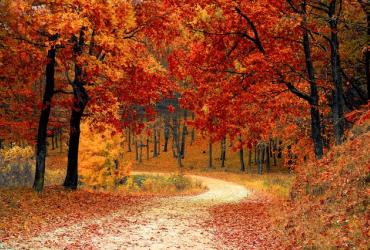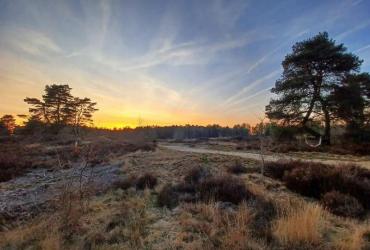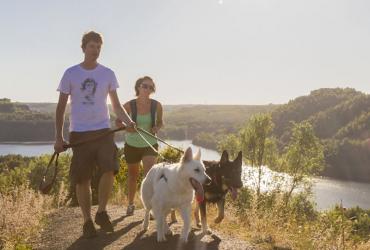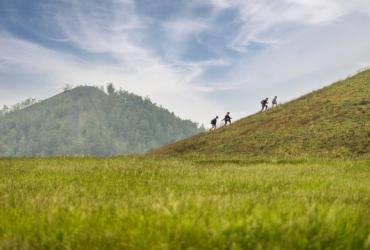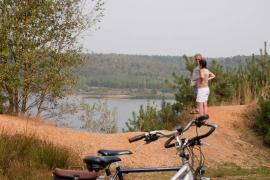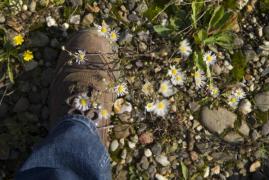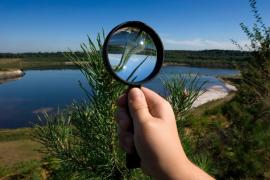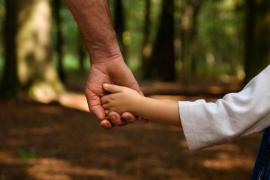This area on the border of the Hoge Kempen and Haspengouw includes a varied landscape that combines the best of both worlds. The hiking area is named after the nature reserve Munsterbos, but it also includes other natural areas such as De Hoefaert, Bonijtersbos, domeinbos Groenendaal or the mysterious castle ruins of Jonckholt. It is the southernmost part of the Hoge Kempen National Park.
The Munsterbos is a nature reserve located between the Albert Canal and the town of Munsterbilzen. The area is European protected as part of Natura 2000 area 'Overgang Kempen-Haspengouw'. During your tour through the centuries-old oak forest the Munsterbos you walk on the border between Kempen and Haspengouw. You will discover pieces of heath landscape that are found nowhere else in Haspengouw. Six streams cut through the 400-hectare nature reserve. The eye-catcher is the centuries-old pond area and the modern observation tower for observing the rare water and marsh birds.
Hiking
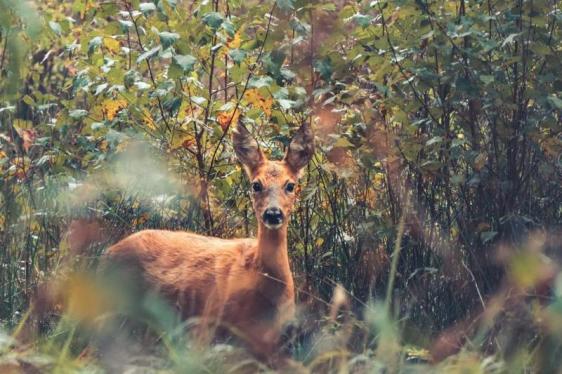
The area has 70 km of hiking trails divided into nine routes. There is not yet an equipped gateway like our other areas have, but there are four starting points where you can park for free, find a hiking information board, and start the hiking trail:
- Parking Munsterbilzen dorp (kruising Appelboomgaardstraat & Abdijstraat, bij het Medisch Centrum St-Jozef), 3740 Bilzen
- Parking Munsterbilzen Taunusweg, Taunusweg 7, 3740 Bilzen
- Parking Hoefaert (bushalte Berenbroek), Hoefaertweg z/n, 3740 Bilzen
- Hoelbeek Kerk, Hoelbeekstraat 81, 3746 Hoelbeek
Hiking trails Munsterbos
View, download and navigate all our routes in the Komoot app, which you get for free from us (normal price €8.99)
Hiking map Munsterbos
Of course, this hiking area also has a nice hiking map where you can find all the hiking trails, starting points, and background info. The hiking map has a scale of 1:15,000, and also includes all accessibility rules and points of interest.
You can buy the map for € 2.5 (excluding shipping) in our webshop or at our entrance gates.
You can also buy the map at VisitBilzen (Oud Stadhuis, Markt 1,3740 Bilzen) or in Alden Biesen (Kasteelstraat 6, 3740 Bilzen).
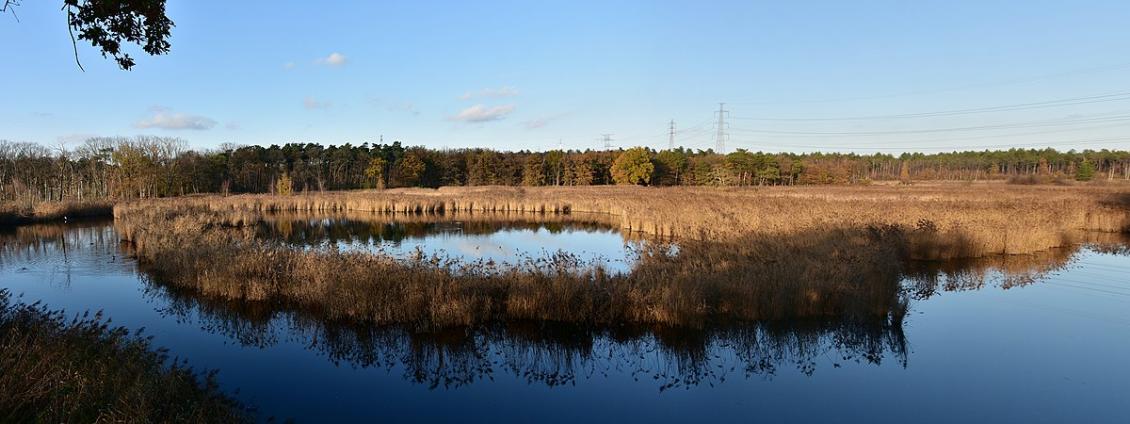
Nature Management
The Munster Forest had lost much of its splendor. Volunteers and employees of Natuurpunt are committed to restoring the original glory of the area. Through specific mowing and grazing management, the many grasslands are once again flowery with cuckoo flower and true cuckoo. Heath remnants, previously previously colored green by birches, oaks and ferns, are again purple areas in the fall. Exotics such as American bird cherry are being controlled. Poplar plantations also had to make way for hay meadows and spontaneous forest. The pond banks are free of trees again.
Work started in 2017 to make the streams meander again. By making the streams meander, we can buffer more water. Those who live in the lower-lying villages are thus less at risk of flooding. Nature also gains. Rare species, such as the brook lamprey, get extra chances. We also restore some old ponds. Special bird species, such as the bittern and the bittern, can then nest in the reed beds.
The works are supported by the province of Limburg. Walkers in the Munster forest can follow the works along the blue and red walking routes, or in the watchtower.
Nature
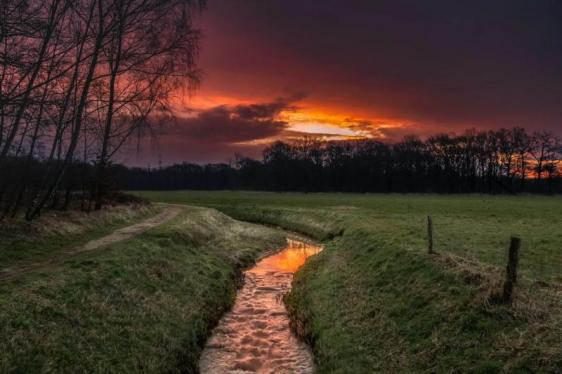
On the border of the Kempen and the fertile Haspengouw lies the Munster forest. Northeast of the village center of Munsterbilzen, 450 hectares of woods, ponds, marshes and grasslands stretch out. Here and there even a patch of purple heather peeps out. Stroll here through the avenues and past picturesque chapels.
The drainage of the Munster forest is via a number of brooks, most of which originate outside the area, on the edge of the Kempen Plateau. These are the Zutendaalbeek, Bezoens- or Stalkerbeek, Molenbeek, Elsterbeek and Wilderbeek. They merge into the Munsterbeek, which in turn flows to the Demer.
The area is so special because of its location on the transition from the sandy Kempen Plateau to the Haspengouw loam region. The streams that flow off the Kempen Plateau contain clear, pure water. For that, the brook lamprey are grateful. The streams draining from Haspengouw are more nutrient-rich. In the Kempen part, the forests are acidic and poor. In the Haspengouw part you will find a varied landscape with species of the loamy region such as mistletoe. Central to the Munster forest are the Staatsvijvers, the easternmost offshoot of the Limburg pond area, also known as De Wijers.
As many as 32 species of dragonflies and 31 species of butterflies fly around the Munster forest. The pine marten also visits here from time to time, and along the Albert Canal at the fish spawning site, a beaver dwells. Along the forest roads grow male primrose, tormentil, blue and small glowwort. Gale, wood-rush and matsedge adorn the edges of the ponds.
The area is also home to the brook lamprey, which is no ordinary fish. Pricks are the only remaining "jawless fish." The adult brook lamprey has a round sucker mouth with a few teeth and an eel-like body without scales. Paired fins, like a common fish, it does not have. However, it does have a fin on its back and one on its tail. lampreys need very clean water and are therefore rare in Flanders. Here they are still found in the Bezoensbeek, one of the five streams in the area.
History of the area
The forest belonged to the Abbey of Munsterbilzen, for which it is named. In the forest are two chapels, both built just after the end of World War II: the St. Amor Chapel and the 1947 Secret Army Chapel. The Saint Amor Chapel has the appearance of a miniature fortress. The round tower even has loopholes. The chapel is dedicated to Saint Amor, an 8th-century saint, a French pilgrim who settled as a hermit in Munsterbilzen later in life.
The ponds of the Munster forest, known to locals as "the state ponds" date from the early 17th century. They were built according to an ancient Kempen system of fish farming. From the watchtower you have a beautiful view over the ponds.
Practical info
Tourist Reception Alden Biesen
Landcommanderij Alden Biesen
Kasteelstraat 6, 3740 Bilzen-Hoeselt - 10 charging poles available in the car park
T: +32 89 39 96 10 - E:
Opening hours:
15 March - 2 November: open every day from 9.30 a.m. - 5.30 p.m.
3 November - 14 March: open every day from 10 a.m. - 4 p.m.
Tourist Reception Bilzen-centrum
Oud Stadhuis
Markt 1, 3740 Bilzen
T: +32 89 39 96 10 - E:
Monday, Tuesdays and Sundays: closed
Wednesday: from 9 a.m. to 4 p.m.
Thursday and Friday: from 9 a.m. - 12:30 p.m. and 1:30 p.m. - 4 p.m.
Saturday: from 11 a.m. - 3 p.m.



